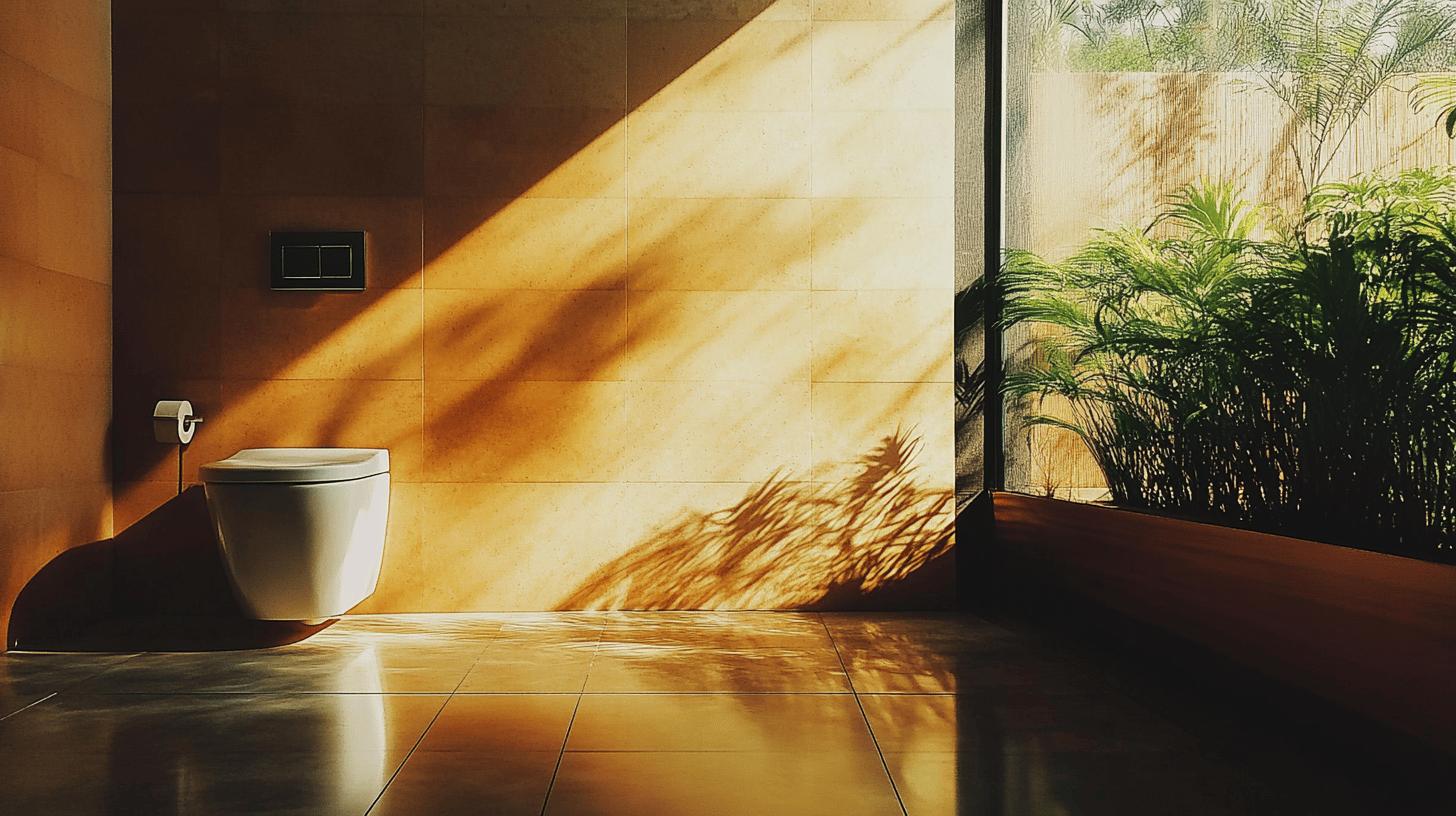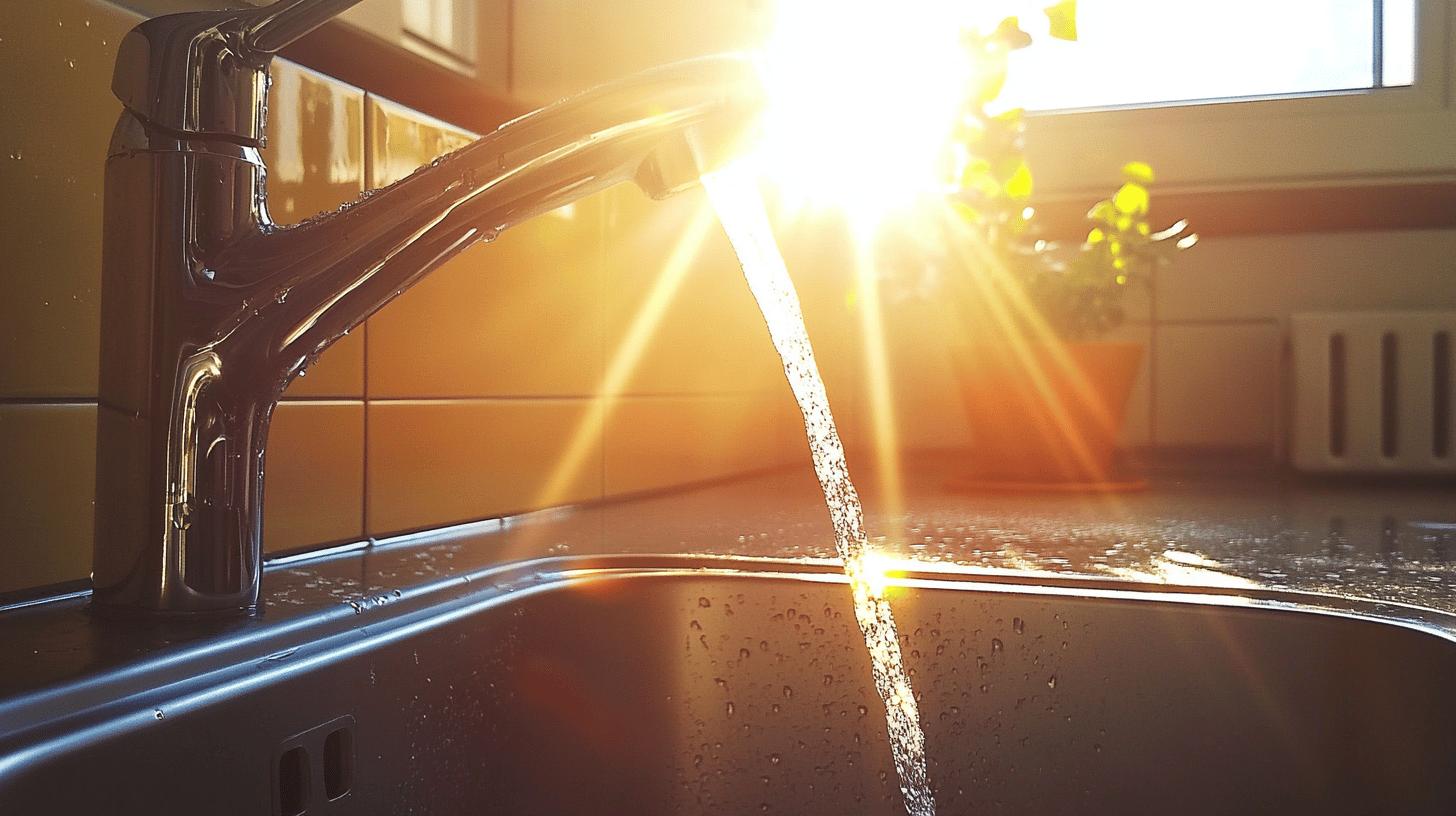TL;DR:
- Low-flow faucets: Use ~1.5 gallons/min, reduce water use by 30%+, lower bills, maintain pressure, easy to install.
- Dual-flush toilets: Full flush ~1.3 gallons, reduced flush uses less, save up to $100/month, lower water waste; professional installation advised.
- Efficient showerheads: Use 1.75 gallons/min, save ~2900 gallons/year, lower energy costs, easy installation.
- Smart irrigation systems: Utilize weather data/sensors to minimize outdoor water waste.
- Recirculating hot-water systems: Reduce wait time, save water/energy, may qualify for tax incentives.
- Eco-friendly fixtures: Include steam showers, rainwater harvesting, and greywater recycling; promote sustainability and reduce bills.
Want to save water and lower your bills while helping the environment? Knowing which fixtures use the least water can make a big impact. From low-flow faucets to dual-flush toilets, there are plenty of water-efficient options that are good for both your home and the planet. In this post, we’ll look at the latest water-saving fixtures, how they work, and why upgrading can make a difference. Let’s dive in and start saving water today!
Understanding Low-Flow Faucets and Their Water-Saving Benefits
Standard faucets use 1 to 3 gallons of water per minute, which can really add up during everyday tasks like washing your hands or rinsing dishes. This means higher water bills and more strain on the environment. Low-flow faucets are a great fix—they use about 1.5 gallons per minute, cutting water flow by at least 30%. Thanks to smart technology, they still maintain good pressure, so you save water without losing performance.
Key benefits:
- Reduce water usage by 30% or more
- Decrease water bills due to lower consumption
- Conserve environmental resources
- Keep water pressure suitable for daily use
- Easy to install and compatible with most plumbing systems
WaterSense-labeled faucets, approved by the EPA, are a great way to save water. They meet strict standards that reduce water use while still working efficiently. By choosing WaterSense faucets, you’re not only helping the environment but also lowering your water bills. It’s a simple, effective way to cut down on home water use.
Dual-Flush Toilets: How They Conserve Water

Dual-flush toilets are a smart way to save water at home. They offer two options: a full flush for solids and a lighter flush for liquids. While older toilets use about 3.5 gallons per flush, dual-flush models use around 1.3 gallons for a full flush and even less for liquids. This helps reduce water usage without sacrificing cleanliness or performance.
| Toilet Type | Water Usage per Flush |
|————-|———————–|
| Traditional Toilet | 3.5 gallons |
| Dual-Flush Toilet (Full Flush) | 1.3 gallons |
| Dual-Flush Toilet (Reduced Flush) | Less than 1.3 gallons |
Switching to dual-flush toilets can save homeowners up to $100 a month on water bills and thousands of gallons each year. Not only does this switch help cut costs, but it also benefits the environment by reducing water waste. Plus, having a professional plumber install these toilets ensures they work properly and last longer.
Efficient Showerheads and Their Role in Water Conservation
Standard showerheads use about 2.5 gallons of water per minute, which can really add up. On the other hand, efficient showerheads reduce that to just 1.75 gallons per minute. This switch can save around 2,900 gallons of water each year per household, making them a key choice for sustainable plumbing.
Advantages of efficient showerheads:
- Reduce water usage to 1.75 gallons per minute
- Save roughly 2900 gallons annually
- Lower water bills by minimizing use
- Decrease energy costs by heating less water
- Ensure comfortable shower pressure
- Easy installation with most shower systems
Switching to these efficient showerheads helps save water and lowers your water and energy bills. Professional plumbers can help you pick the right fixtures and install them correctly, maximizing both water conservation and savings.
Smart Home Technology: Advanced Water-Saving Solutions

Smart irrigation systems really help cut down on outdoor water waste by using weather data and soil sensors to figure out exactly how much water your plants need. This means no more overwatering! They adjust based on the weather, keeping your garden healthy while also lowering your water bills.
Recirculating hot-water systems are another great option. They deliver hot water quickly, so you don’t waste any while waiting for it to heat up. Plus, they use less energy since less water has to be reheated, and you might even qualify for tax incentives, making them a smart choice for saving water.
Bringing in smart home technology can boost your water conservation efforts and help cut your utility costs. These tailored systems meet your home’s specific needs for efficiency. A professional plumber can help install them correctly to ensure you get the most benefit.
Eco-Friendly Fixtures for Sustainable Living
Steam showers are one of the best eco-friendly options out there because they use way less water than regular showers. They only need about two gallons per session, while traditional showers can use a lot more. Not only do steam showers save water, but they also give you a spa-like experience, making your shower time both comfortable and efficient.
Eco-friendly fixture options:
- Steam Showers: Minimal water use for a luxurious experience.
- Rainwater Harvesting Systems: Collect rainwater for non-drinking purposes like irrigation.
- Greywater Recycling Systems: Reuse water from sinks and showers for landscaping.
- Low-Flow Toilets: Significantly reduce water used per flush.
These fixtures help you live more sustainably by conserving water and cutting down your bills over time. Rainwater harvesting and greywater systems take it a step further by recycling usable water. When professional plumbers handle the installation, these systems work efficiently and can save you money in the long run, making them a wise choice for anyone looking to live more sustainably
Final Words
Looking into water-saving fixtures is a great way to cut down on water use and live sustainably. Low-flow faucets limit water flow, making them some of the most efficient options. Dual-flush toilets use way less water with each flush, and efficient showerheads save water every time you shower. Plus, smart home tech like irrigation and recirculating systems takes water conservation to the next level. By choosing eco-friendly fixtures, you’re not just helping the environment; you’re also saving money. These solutions turn your home into a model of efficiency and conservation.
FAQ
What are water-saving fixtures?
Water-saving fixtures are plumbing devices designed to reduce water usage in homes and businesses. They include low-flow faucets, dual-flush toilets, and efficient showerheads, all of which are engineered for water conservation without compromising performance.
What indoor fixture uses the most water?
The traditional toilet is typically the indoor fixture that uses the most water, with older models using up to 3.5 gallons per flush. Modern, high-efficiency toilets can significantly reduce water consumption.
What are low-flow plumbing fixtures?
Low-flow plumbing fixtures are designed to use less water than traditional models. They include faucets, showerheads, and toilets that achieve water conservation by restricting flow rates to more efficient levels.
Which fixtures use the least amount of water?
Low-flow faucets and high-efficiency toilets use the least amount of water. These fixtures are specifically engineered to minimize water usage while maintaining effective performance levels.

